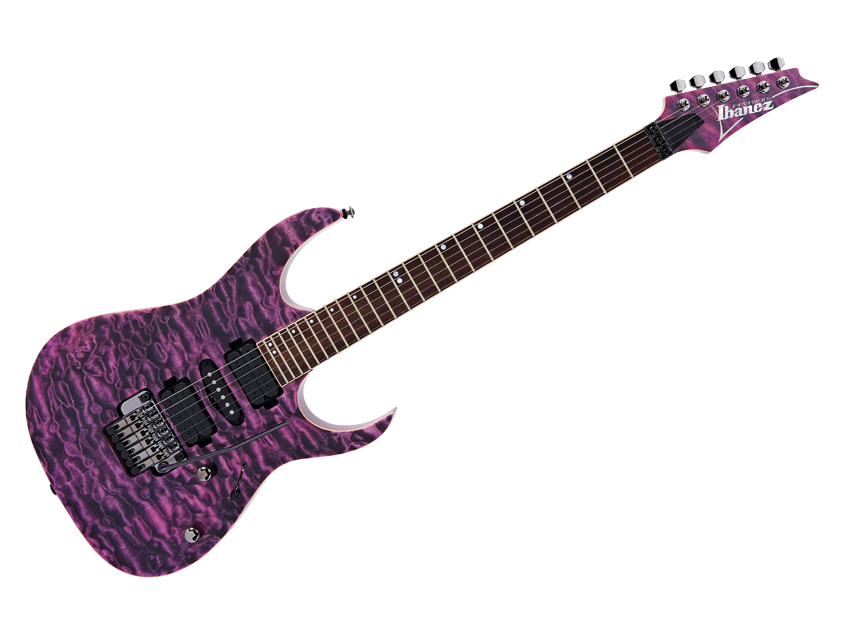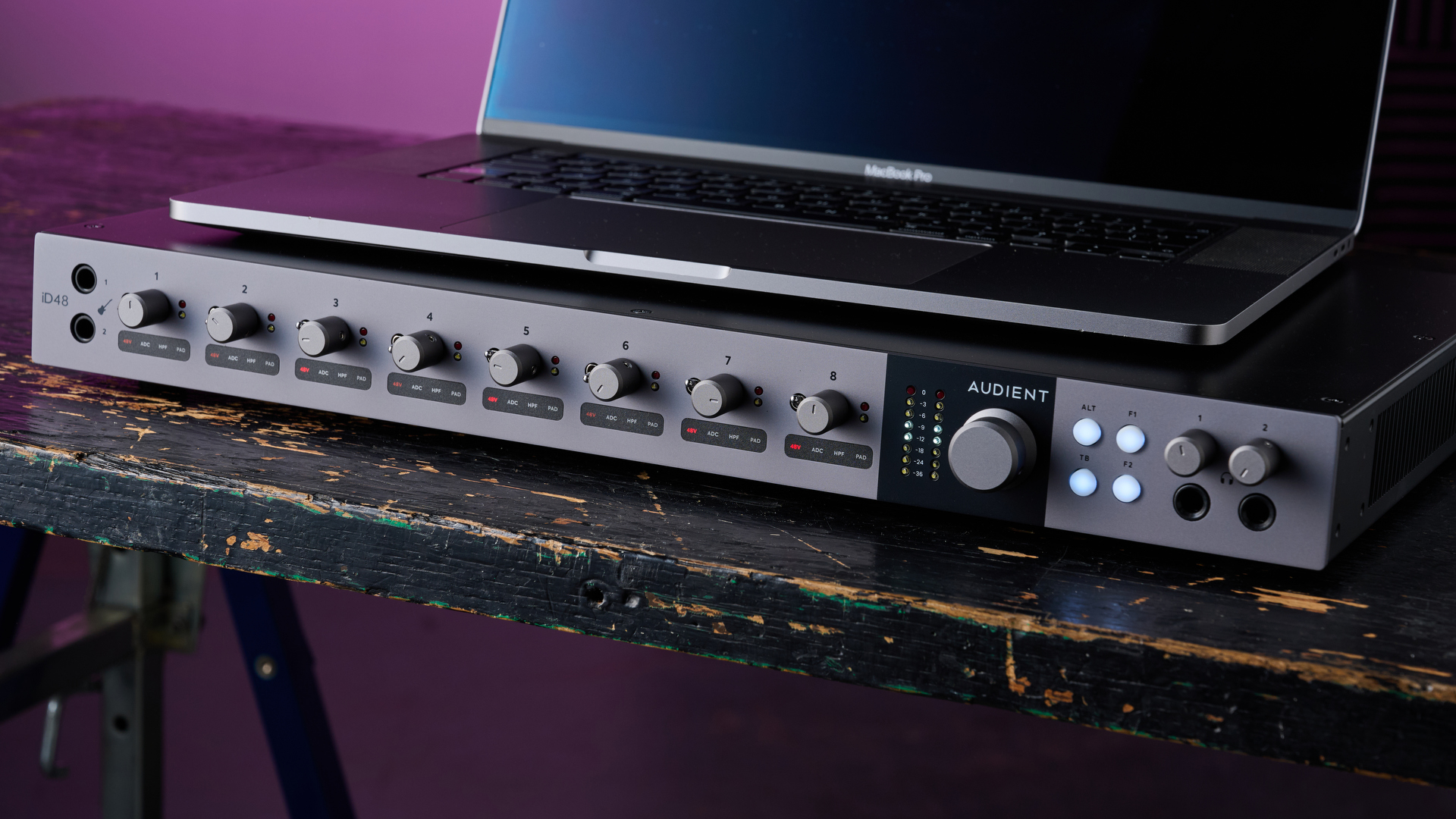MusicRadar Verdict
Not for the conservative, this is a supremely playable instrument.
Pros
- +
Tonal versatility; none-more-speedy neck; manually adjustable vibrato.
Cons
- -
Has its work cut out in a crowded market.
MusicRadar's got your back
It's little wonder wizened old shred-goats glaze over with misty-eyed, open-mouthed ardour when regarding the Ibanez RG series.
Launched in 1987 and rocked by individualists who felt that the Japanese company's flagship JEM series (which debuted that same year) was, well, just a little too Steve Vai, the Roadster Guitar was the go-to Superstrat for the shred-me-quick everyman.
"The RG's Edge-Zero II vibrato really is a superlative piece of engineering."
The RGs looked mean with sharktooth inlays and super-cool paint jobs such as Lazer Blue and Road Flare Red. Similarly, Ibanez's new Indonesian-built RG Premium line courts today's brisk-fingered guitarists with promises of an affordable yet high-spec pro guitar, steeped in the RG series' thoroughbred DNA.
The guitar genetics are reassuringly RG. There's the much-loved Wizard neck; with a skeletal 1st fret radius of 18mm, it was always the RG's pre-eminent performance-enhancing feature.
On the Premium, the Wizard is a five-piece maple/walnut bolt-on effort, buttressed with titanium. A five-way pickup selector offers great tonal versatility, just the thing for those gigs when all the audience's desires oscillate between thrash metal and George Benson jazz-funk disco.
While the sharktooth inlays are retired on the Premium, the jumbo frets stay and are immaculately hand-finished too, plus a quilted maple top offers a bit of PRS-esque glam. Then there's the souped-up vibrato: here, Ibanez has really nailed it.
You see, the old floating Edge vibrato of the 80s/early-90s models is a great piece of kit, but the Edge-Zero II unit's stability and ease of use will please those who go big on whammy bar gymnastics but are not so hot on guitar maintenance. Adjustments are easy. The Zero Point System (ZPS) ensures that breaking strings doesn't cause a performance/nervous breakdown.
The Edge-Zero II really is a superlative piece of engineering, which even enables those who prefer a floating vibrato to remove the spring and stop rod, deactivating the ZPS. Hey, it's nice to have the option.
Weighing it all up - as in: is this the guitar for you? - the Edge-Zero II is a real sweetener when pitching the Premium against shred-sticks made by Jackson and LTD.
The latter might have more exciting pickup options (Seymour Duncan/EMG vs Ibanez's CAP-VM series) for those toneheads itching for high-gain. That said, the Premium sounds fantastic in its own right.
The bridge humbucker (CAP-VM2) has plenty of harmonic resonance and punch, certainly at home for rock and metal, while the neck humbucker (CAP-VM1) is that bit tamer, perfect for intricate sweeps and all your arpeggiated witchcraft. Selecting the singlecoil - or split with neck or bridge humbuckers - unearths your inner Eddie Hazel, perfect for spanky funk and blues playing.
With a street price of around 700 quid, the Premium is poking its pointy headstock into a crowded market.
But just think about it. If you consider the quilted maple finish a high-class turn-on rather than cock rock folly, and you value unrivalled playability from an emaciated neck, making little fingers feel like Mr Tickle's arms, plus a super-stable vibrato unit that can pull the most alien sounds from a guitar: choosing the Premium should be a no-brainer.
Jonathan Horsley has been writing about guitars and guitar culture since 2005, playing them since 1990, and regularly contributes to MusicRadar, Total Guitar and Guitar World. He uses Jazz III nylon picks, 10s during the week, 9s at the weekend, and shamefully still struggles with rhythm figure one of Van Halen’s Panama.
“It has the ingenious ability to give you easy routing to external hardware with no re-patching”: Audient iD48 review
“If this was real, it would be really impressive. But since it’s not real, it’s really impressive": Watch the bonkers four-note piano
Watch UK electronic artist Lawrence Hart build a track from scratch in his hardware-stuffed studio











